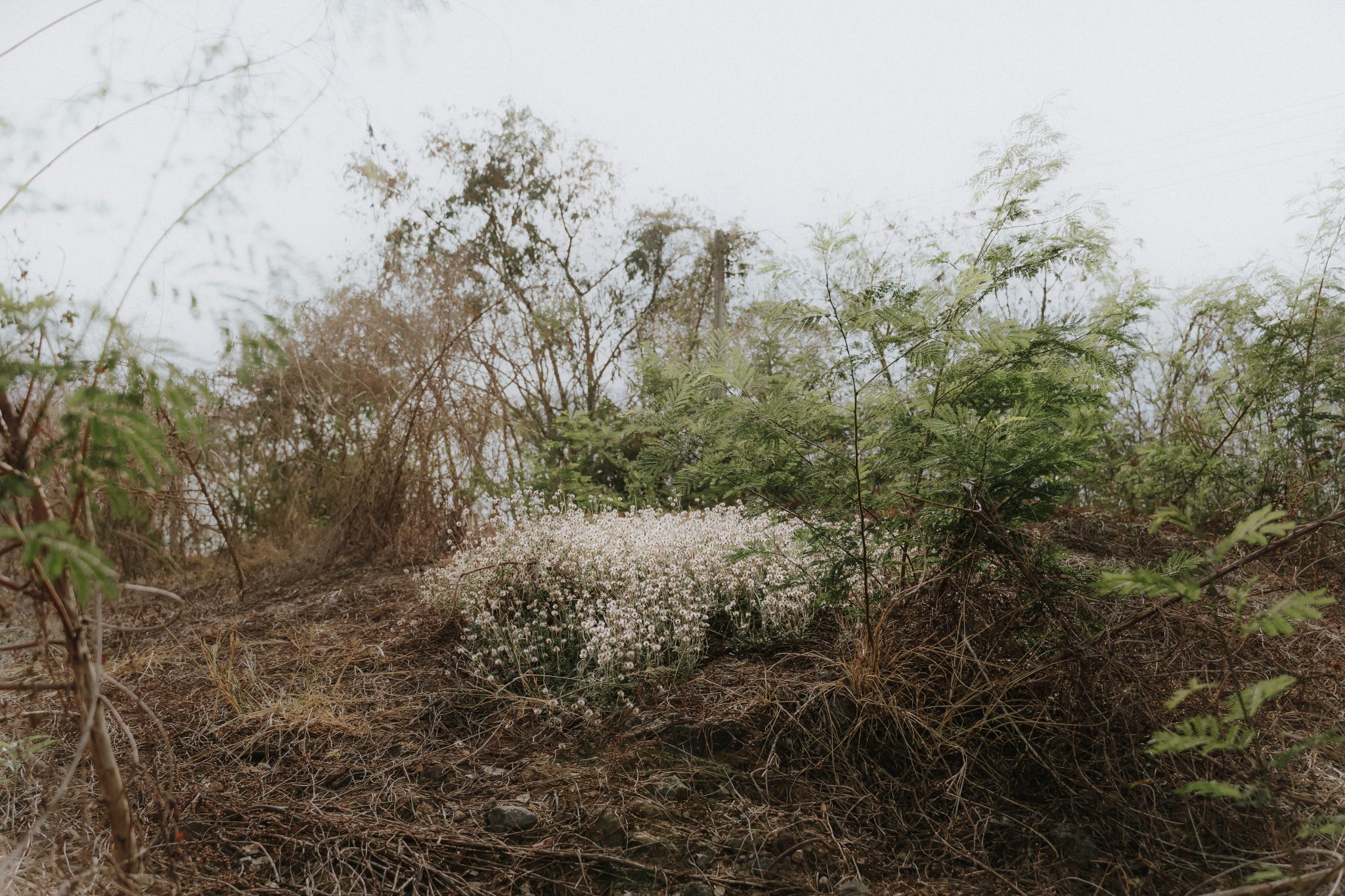Blooms With The Wind Blows at Hub of Photography, Bangkok takes an autoethnographic view of the natural world
Last year, emerging Thai-Khmer artist Marisa Srijunpleang jointly won the Bangkok Art and Culture Centre’s sixth ‘Early Years Project’ for an excavation of family history that journeyed deep into the painful recesses of her relatives’ past – to the extent that it was named after the immigrant number given to her aunt when she sought asylum in the US following the Cambodian genocide. An installation centred on family testimony, photographs, letters and get-togethers, T360174 (2023), was an attempt to publicly demarcate and internalise the rarely-spoken-of events that befell Srijunpleang’s aunt and grandparents in 1975, when they got stuck in Cambodia while on a brief trip across the border from Thailand’s Surin province. Its affecting video component paired her aunt’s recollections of their daily struggle to survive during the four-year reign of the murderous Khmer Rouge with footage of the family, as it exists today, gathering wildflowers and preparing offerings for an ancestor-worship ceremony known as Sandonta, unique to this region.
Srijunpleang’s first solo exhibition expands on this autoethnographic groundwork by paring it down to its earthy floral component: arranged along the walls is an intimate photographic study of the grass flowers that grow along the Thai–Cambodian border near her family home. Most of the 15 images frame disorderly clumps of white-tipped grass flowers sprouting amid the knotted, desiccated terrain of sun-scorched scrublands – bushes and thickets that faintly resemble, to my eyes, the chalk outlines of a recent murder scene, the silhouettes of corpses that decomposed where and as they fell, or the overgrowth rising insidiously over forgotten graves.

Today, along a different Thai border, another civil war rages: more than three million people have been displaced and tens of thousands killed in Myanmar since 2021. With villagers and revolutionaries hiding out and dying in Myanmar’s jungles at this very moment, it is hard not to view these melancholic images through that lens. Yet there is something life-affirming about them, not merely funereal. Moving through the inhospitable border zones of Surin, across land that was a vulnerable frontier – a realm of limbo, penury and death – dominated by armies and refugee camps during and after Khmer Rouge rule, and where “bombs were everywhere, just like in the movies” (as another aunt puts it in the video documentation), Srijunpleang found herself drawn to these hardy plants. Her weighty, if somewhat overwrought titles, such as Be Strong Under The Sun, Rough and Resolute with the Wind (both 2024), broadly hint at what her subjects denote within the elegiac realm of evanescence and loss she draws us into through a sparse interplay of image and text: these flowers are at once placeholders for those blown off course by the war, memories feeding off the stained soil and representations of her family’s indomitable spirit.
The core interests at the root of Srijunpleang’s practice – an animistic attunement to the spirits of inanimate things and charged landscapes, and a desire to reforge familial bonds and traditions – are embodied most powerfully by the exhibition’s titular, ritualistic centrepiece: a cone of feathered dok rak (crown flower) seeds arranged on a round acrylic base and spotlit from above for dramatic effect. With many details of the war still unspoken, Srijunpleang has latched onto the Sandonta ceremony as a means of connecting to other forms of local knowledge situated in the past, but also partially lost. Here the fleecy white seed of the dok rak – a ‘flower of love’ often used in phuang malai (Thai floral garlands) – fills the absence left by phaka bai ben – a seasonal flower once used in homage-paying rites but no longer found growing in the region – to moving effect. Having encountered them drifting in the air throughout her journey, and sensing an ineffable significance in them, Srijunpleang has turned what is normally an offering presented to the spirits of ancestors – a simple, decorative flower arrangement structured around a banana-leaf cone – into what appears to be a rare family gathering or reunion of sorts.
Blooms With The Wind Blows at HOP – Hub of Photography, Bangkok, through 21 July
